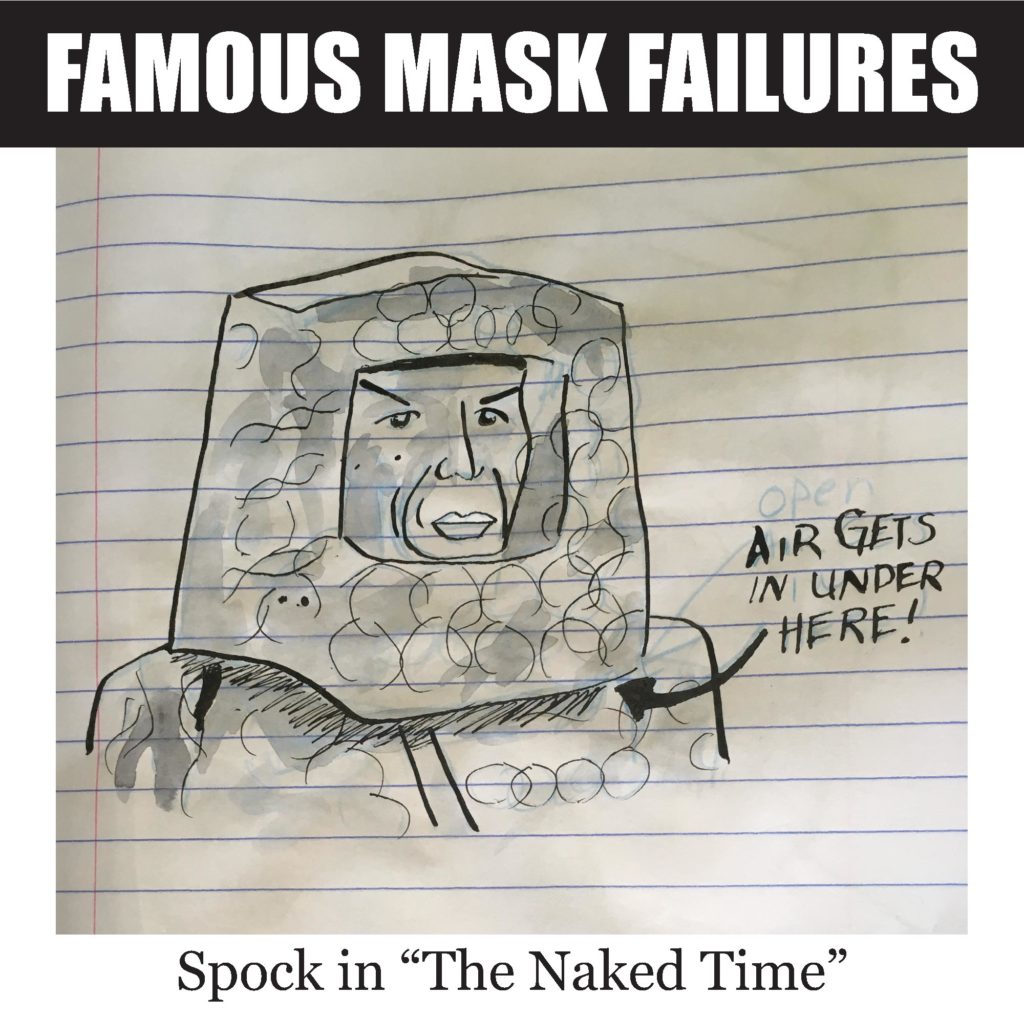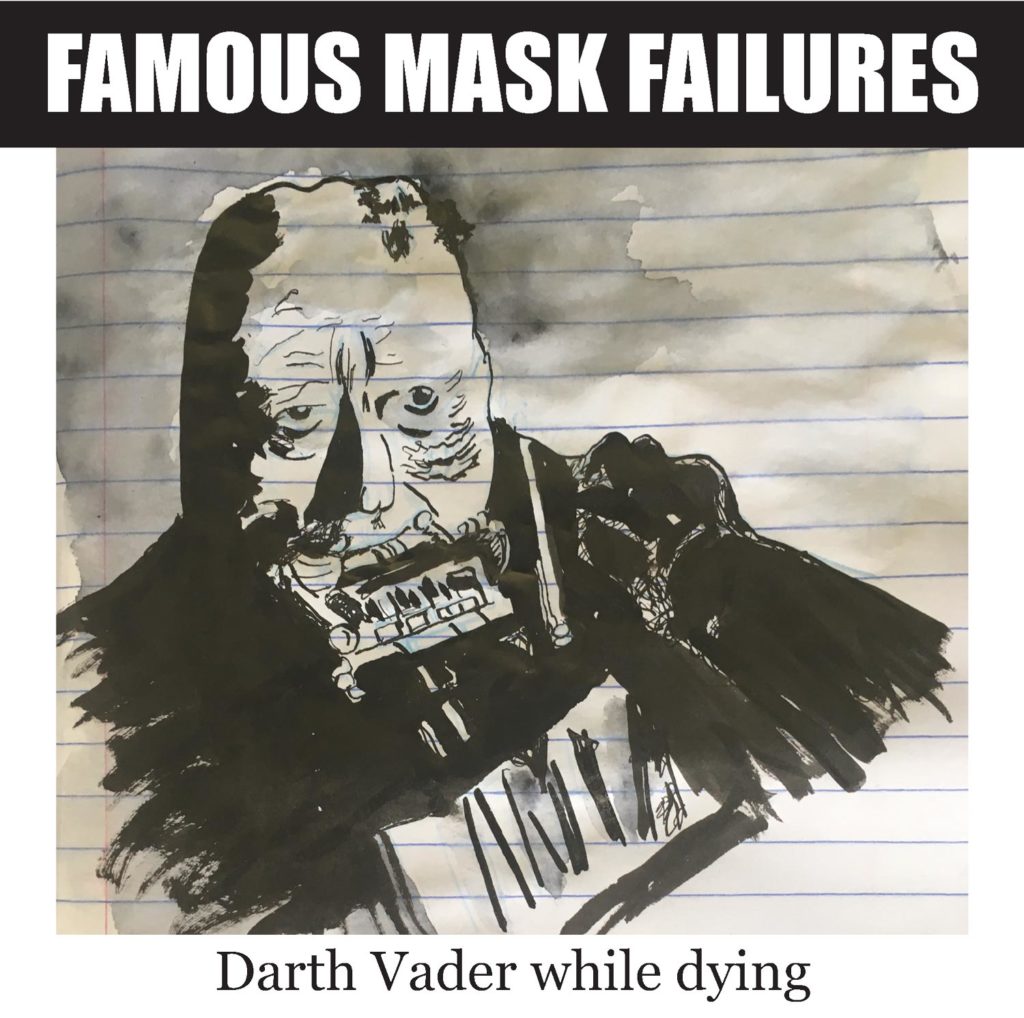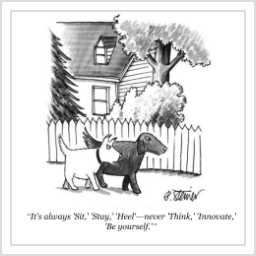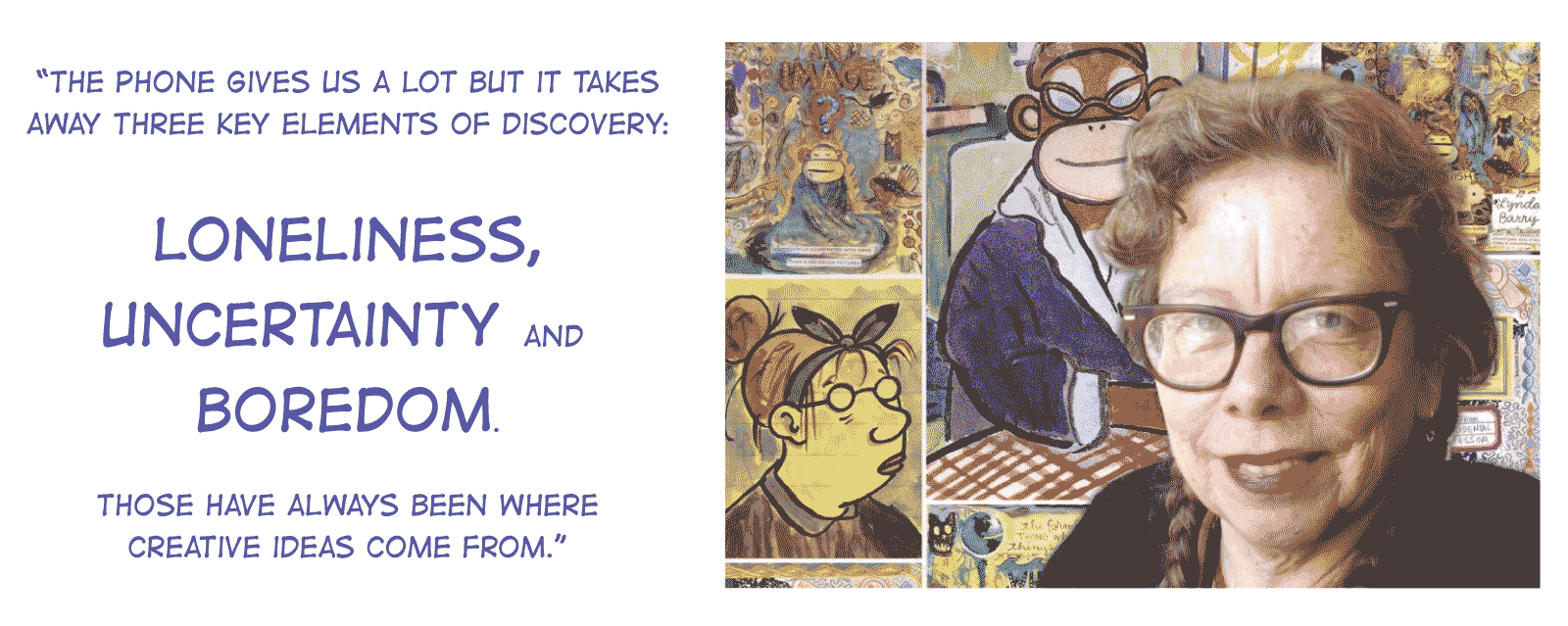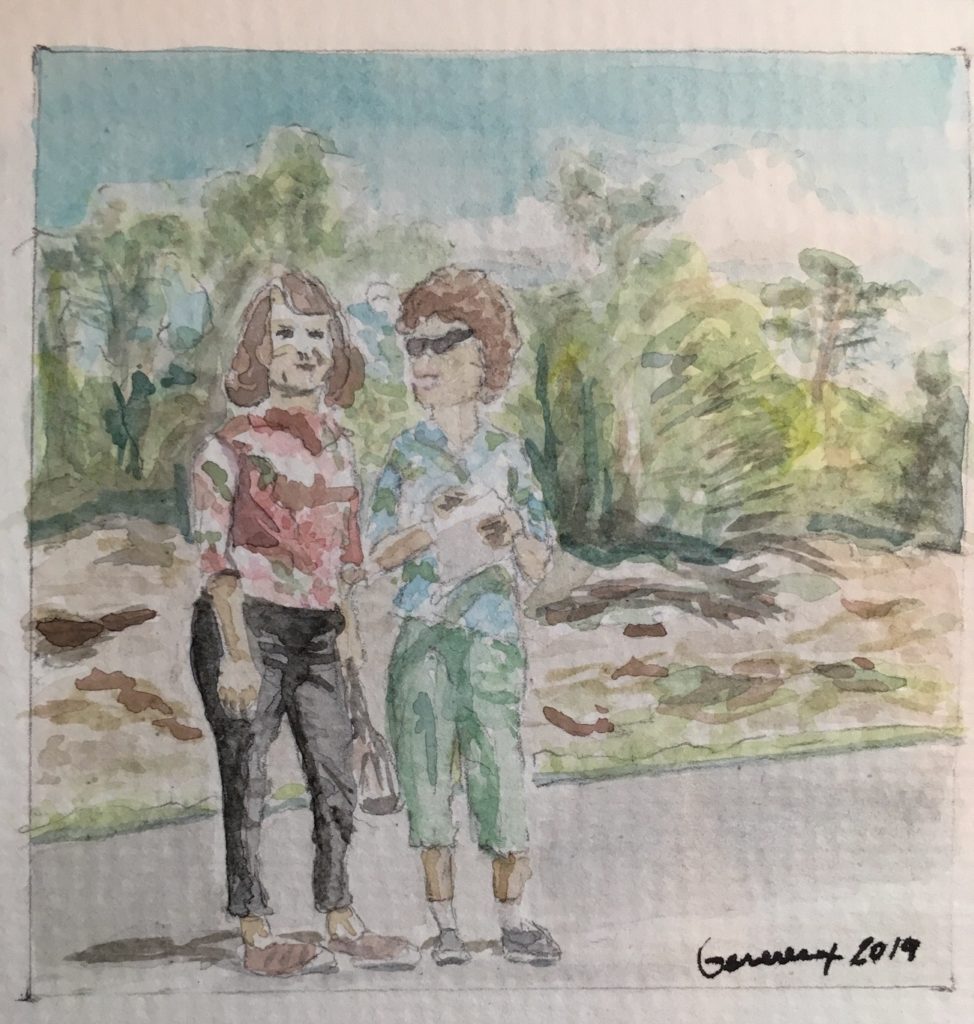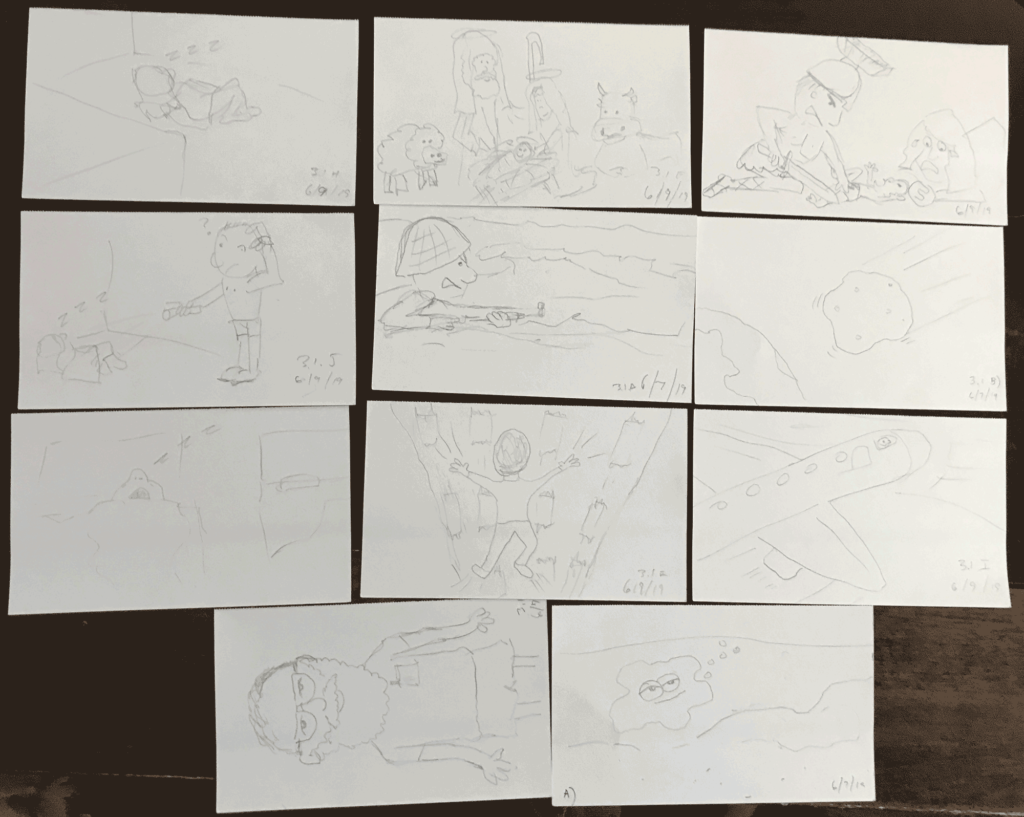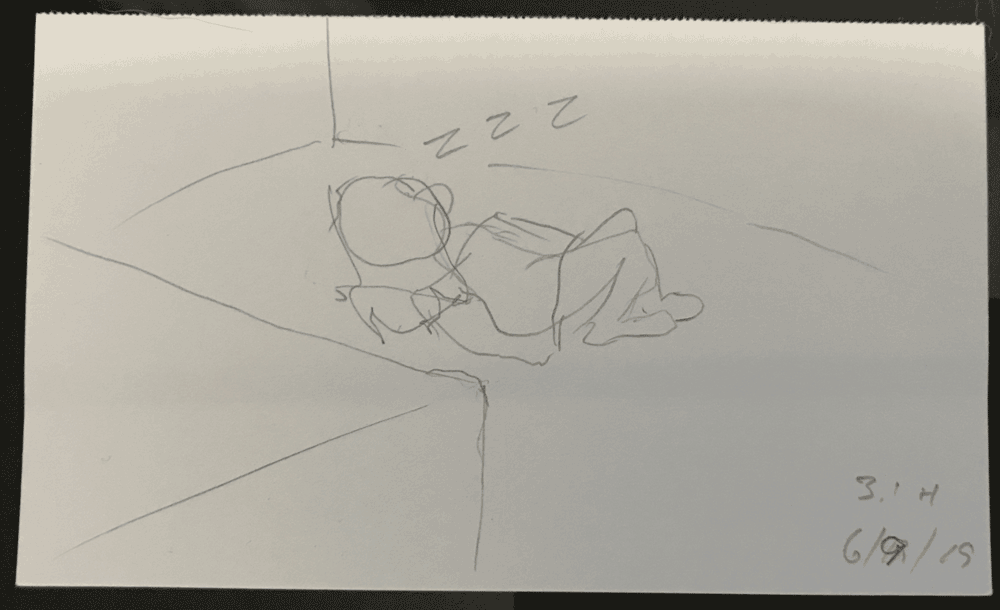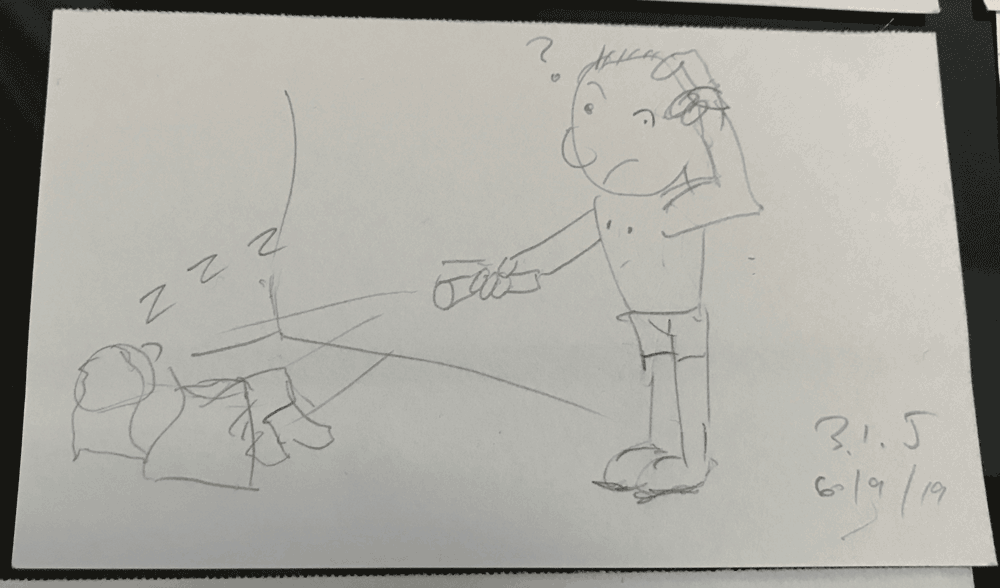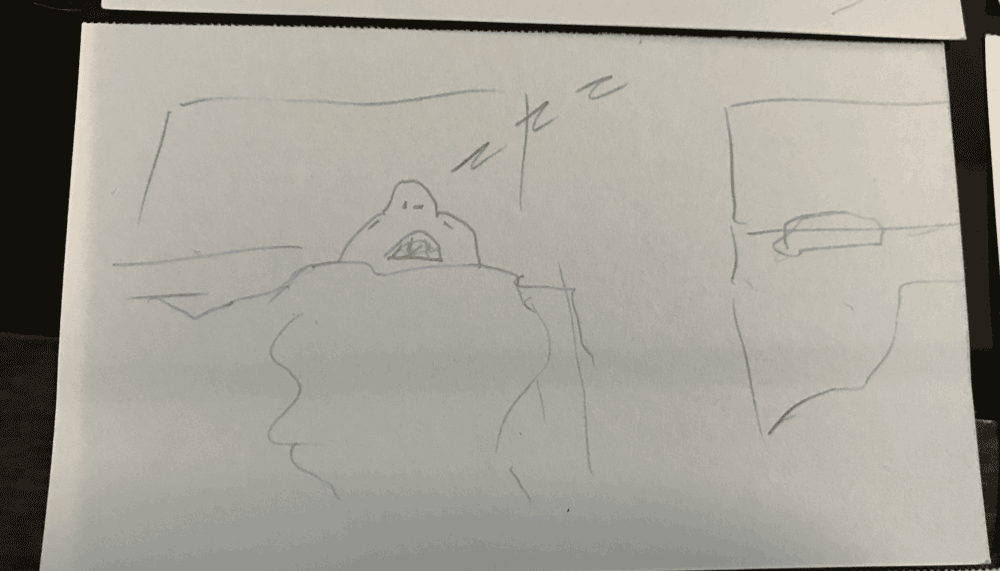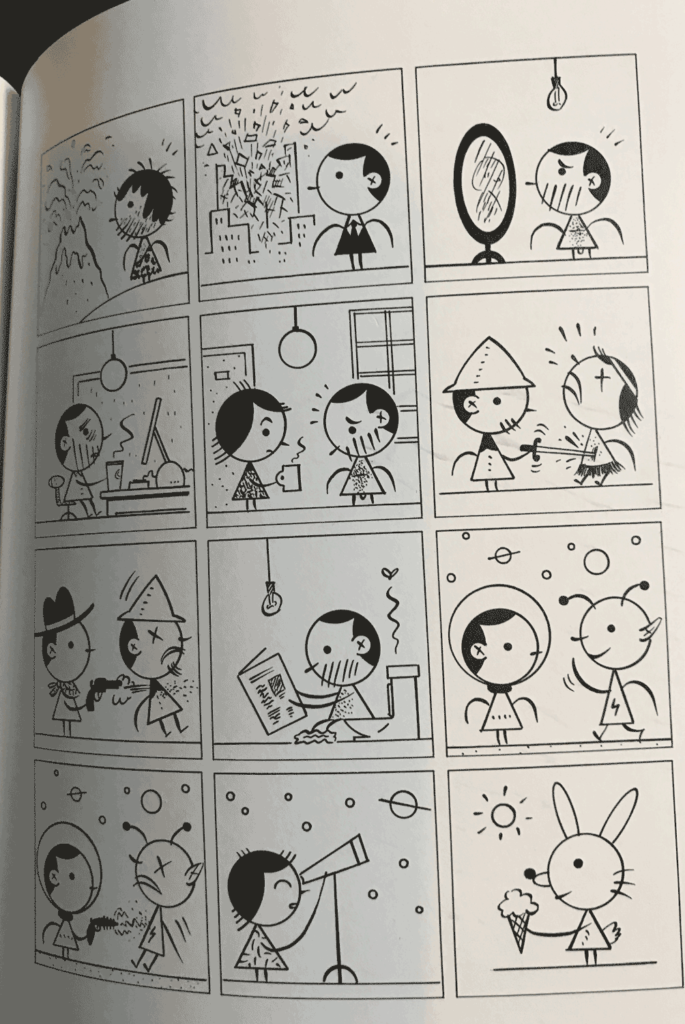Category Archives: creativity
Famous Mask Fails – Darth Vader
Lynda Barry X Page Exercise
Family Sings Werewolves of London
I think the family performances during the pandemic are the best. Here’s one spotted by my friend Joe Coda…
Teachers of TikTok
I like her style. The quarantine is unleashing all manner of creativity…
@makeshift.macaroni##ukulele ##uke ##originalsong ##teachersoftiktok ##tiktokteacher ##smallgestures♬ original sound – makeshift.macaroni
Shifting to online learning so abruptly, without any advance warning and in most cases without any training, practice or experience delivering a course from a distance, understandably elicits such a reaction.
I didn’t sign up for this!
I know the feeling. I didn’t become a teacher to be estranged from my students. And the horror of Covid-19 is all too scary and real. However, I think this new reality is bringing about a critical shift in perspective. There is no going back. Anyone hoping for things to go back to exactly the way they were is in for a rude awakening. Our world changed after 9/11. Our world changed after Pearl Harbor. These kinds of events change our world into something different. Not necessarily in a better or worse way, although it could be both, but just different than how it was before.
Honestly, for me, I refuse to return to the old way. I am happier now, more productive and creative now and am more fulfilled in my work than ever before.
Well, that is easy for you to say, Mister Digital Media Man. You love this stuff!
It is true to some extent that I do love this stuff. But I also abhor some of this stuff as well. While the world has mindlessly embraced the 24/7 commitment to smartphones and mobile technology, I have been more skittish. I don’t necessarily like what the tech does to us, particularly when we adopt it without pause or reflection. I try to be purposeful in my use of technology because it is addictive stuff.
So I feel a deep connection with the music teacher who is sad to be apart from her pupils. But I am also aware of some clever uses of technology to keep us connected while we are apart. TikTok is one of those ways, by the way, but I don’t think makeshift.macaroni’s intended audience is her students. I’m not saying it should be, simply noting that it could be if desired.
As for me and my students, we have been practicing together in this new way of being for over a decade now. Not without some resistance, I might add. I have long promoted using blogs, showing our work online, connecting online with others having the skills and knowledge that you desire, communicating in various digital formats including video conferencing. Together we have practiced. Sometimes there were misunderstandings and bumps in the road. Sometimes we wondered why we were even doing it. Now we know. We were preparing to flourish in a time like we are currently experiencing.
If you find this new reality unsettling, if it is completely unfamiliar territory and you just want it to go back to normal, it is because you have not practiced as much as I have. Things won’t stay this way forever, but they won’t return to our pre-2020 existence either. Our eyes are being opened to new possibilities. Along with the danger and the heartbreak will come new ideas and opportunities. Just like after 9/11, our world has changed forever. Better get used to it. Technology is part of our new normal and there is no going back.
Creativity – Now is the Time
In the midst of coping with the global pandemic and moving all of our activities online, many people are thinking that they have been completely hamstrung, unable to do their work and unable to function in a way that feels normal.
Someone at the Wakonse Conference on College Teaching(I think it was Gail Ludwig) once said,
Normal is a setting on a clothes dryer.
In other words, there is no such thing as normal. There is only what we are accustomed to. There is only what we prefer or wish for. It is all a matter of perspective.
There are people like myself who have been living a portion of their lives online for some time now. You might call me an early adopter, relatively speaking. Of course, there were early pioneers of digital culture who were working and living digitally for decades before I began exploring these tools. But the mass creation of digital citizens with the advent of modern social media platforms like Facebook came a couple of decades after I began exploring the realm of the online world.
America Online was an online community created by brute force. Millions of AOL disks were sent out, the majority of which became coffee cup coasters and landfill debris. I was learning and exploring before even that major push to bring people together online. My life and work were radically altered and I wanted to tell as many people about it as I could.
I created my very first HTML webpage on a yellow legal pad sitting inside a tent in a soggy Minnesota campground, sometime in the early 1990s. My only reference was a printed copy of Webpages for Dummies. I hand wrote the HTML code that I wanted to use to create a webpage. I don’t recall if that experience predated or came after my Geocities website; both happened around the same time. Geocities was a shared web hosting platform. You coded up your webpages and you could have a free website. The websites generally looked horrible, but the community was wonderful!
The whole site was arranged by interest group. My group was Cape Canaveral. I searched the Geocities archive for the site I built there, but I was not able to find it. I thought perhaps I had written about my time in the Navy, so I searched for “Yokosuka,” the port city in Japan where I was stationed. I didn’t find anything written by me, but I found a fascinating page about the occupation of Yokosuka at the end of WWII. There was some really good stuff on that early Internet community.
I’m telling you about my long history of working and living digitally because we now find ourselves in a situation where these kinds of skills are extremely sought after. Only now, it seems, has the need for these digital communication tools and skills been brought to the forefront of nearly everyone’s consciousness and imagination.
Where have you all been? I have been waiting for you!
I have even made a digital media degree program to teach you what you need to survive in the digital realm. For a long time, it has felt as though my efforts and knowledge have gone largely unrecognized. And a number of those who have shown up have questioned what I have been trying to achieve.
I remember constantly getting comments on my teaching evaluations from students who resented being made to go online to “do risky things and share personal information” or “join an online learning community collaborating with others at a distance.” I remember worrying about what my colleagues thought about such comments. Yes, I did and still do encourage students to share the projects they are working on and to use their own names. I have long believed this fosters a better Internet. Only anonymous people are trolls. However, I understand that everyone is unique and sees things from their own point of view. I don’t force anyone to reveal their identity. I only recommend it as a best practice.
I believe sharing stuff online also encourages students to put their best foot forward and to not simply go through the motions but actually strive to please an audience beyond the “audience of one,” the professor who is grading the assignment. I believe it also opens up the possibility of someone with influence seeing your excellent work and helping you. This has happened to me many times over the years. I would never recommend doing things I am unwilling to do myself.
Austin Kleon wrote a terrific book that explains these principles, Show Your Work. Maybe I should have just written a similar book, I have been telling my students about these things for so long. To me, these principles are self-evident. Never before in human history has it been so easy to be discovered, to have your work seen, to be recognized. You might be asking, “If it is so easy, why haven’t you done it yet.” I’m just not that great at explaining, summarizing and promotion. I suppose it is something I should work on.
But now we have been forced into hiding, but we are venturing out – online. People are doing live broadcasts and creating digital content who have never ever done such things before because there was no demand or need for it like there is right now. I have been getting such a kick out of working with these enthusiastic new learners. They are constantly looking at me with awe and wonder, “you know how to do that? That skill is amazing!” they say. And I just shrug and smile and say, well I’ve been burning my own CDs for the past 25 years.
If you are not trying out some new things these days. If you are not experimenting, stretching and increasing your skills. If you are not documenting your day to day experiences in all of this chaos, you are missing out.
Now is the time for creativity.
Phones and Lynda Barry
I found this special insight on technology this morning when reading about my favorite artist/author Lynda Barry. Technology always gives us things and also takes things away from us. As someone keenly interested in creativity, I have had hunches about this before but haven’t ever seen this precise observation on the impact of our use of mobile phones:
“The phone gives us a lot but it takes away three key elements of discovery: loneliness, uncertainty and boredom. Those have always been where creative ideas come from.”
Anna and her daughter
Getting into watercolor again. It is a tricky medium. Hard to control, it goes where it is not expected to and so forth. There are some technical things I would like to improve with this. One thing is the proportions of the two women are not quite right. Also, the girl on the left has a random dark mark on her chin I didn’t intend. There’s not much you can do about that after it has dried. I’m not really satisfied with the way that face turned out and prefer the one on the right better. I think the trees have too much going on and it is pretty muddy in the background. It might be better to use less paint and more suggestion there.
The picture is only 3.5″ square, so the area for the faces is pretty tiny to begin with. It is difficult to get any details that look good at that scale and with the brushes I have. My eyesight is getting pretty bad and I might need to invest in a magnifying glass if I keep working on things like this.
I would say my favorite things with this piece that turned out reasonably well are the women’s trousers, especially the darker one on the left. Also the woman’s hair on the right. It is a good first effort and I may try to re-do this scene at some point.
Cartooning Week 3
I’m falling behind on my cartooning efforts. I made these drawings for the first assignment in Week 3 of Brunetti’s cartooning book last weekend, but haven’t had a chance to reflect or write on them until this morning.
For Exercise 3.1 Brunetti says to draw 12 scenes on notecards with prompts he gives like “beginning of the world” “end of the world” “something that happened at lunchtime” “an image from a recent dream” “something that happened early this morning” “something happened right after that” and so on.
These are drawn on notecards in order to facilitate arranging the scenes into a four-panel sequence noting the type of narrative you prefer, what visual elements connect the scenes, breaks in the narrative, reordering the scenes and so forth. According to Brunetti, “the haiku-like rigidity of the four-panel structure allows us quite a flexible starting point.”
One of my favorite sequences was “something that happened early this morning.” We spent the night in a hotel for my daughter’s softball tournament. I woke up in a panic because she wasn’t in her bed. I found her sleeping on the floor. All the while, her mother was sound asleep, oblivious to my panic over our missing child.
I wasn’t really able to make a four-panel sequence using that, as I only drew three scenes of it. But I did rather like the nightmare sequence of the person falling, the D-Day invasion, the asteroid falling towards the earth and the person in bed sleeping. I think that one worked with the sleeping person either at the end or the beginning of the sequence.
I think the ideas are connected by being nightmarish scenes, then the relief that they are only dreams. When I compared my 11 cards (I didn’t get the 12th one made) with Brunetti’s example in the book, I noticed that each of his panels (except one with an animal character) featured a person in it, whereas mine did not always prominently feature a character.
The other thing I noticed is his style of drawing characters with simple geometric shapes and background elements gives a consistency of visual elements in every panel. I don’t really have anything like that. He draws a line for the ground in every single scene. Many of mine have straight line elements, but some do not. He also uses a circle in the background in most of his panels, either a light fixture, the sun, or stars and planets in the futuristic scenes. This gives his work a distinctive and recognizable quality to it. He’s found his visual “voice” whereas it seems I’m still searching for mine.
The Last Milkman Documentary
The Last Milkman is a video created by myself and Aaron Wertenberger for Twin Valley Television. It features Lawrence Schleuder, a resident of Concordia Kansas who delivered the milk to homes and businesses well beyond the traditional age for retirement.
Lawrence passed away in 2017. This is dedicated to his memory.
